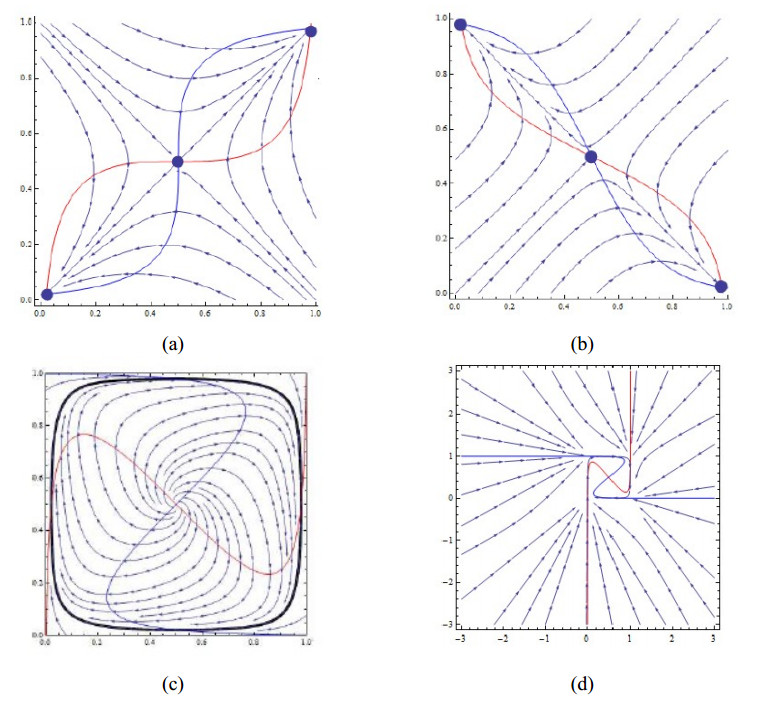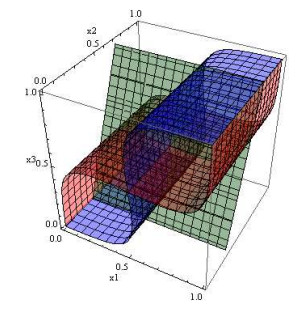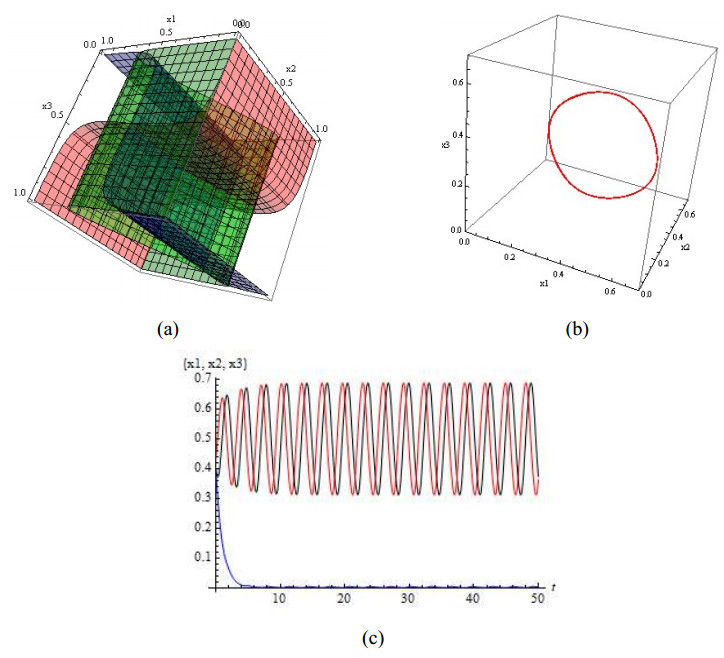1.
Introduction
Hermite-Hadamard inequality (H-H inequality, in short) was firstly introduced by Hermite and Hadamard [1,2] for convex functions are well-acknowledged significant in literature. Since H-H Inequality has been regarded as one of the useful techniques in optimization and mathematical analysis, and for developing the quantitative and qualitative properties of convexity and generalized convexity. Due to applications of this inequality in different directions, there has been continuous growth of interest in such an area of research. As a result, several applications of convex and generalized convex functions have been developed. Following inequality is known as H-H inequality:
where Ψ:K→R is a convex function on the interval K=[μ,ν] with μ<ν. Noor [3] presented the following H-H inequality for h-preinvex function in 2007:
where Ψ:K→R+ is a preinvex function on the invex set K=[μ,μ+θ(ν,μ)] with μ<μ+θ(ν,μ) and h:[0,1]→R+ with h(12)≠0. A step forward, Marian Matloka [4] constructed H-H Fejér inequalities for h-preinvex function and investigated some different properties of differentiable preinvex function. For convex and nonconvex functions, various extensions and generalizations of the H-H inequality have recently been derived. See [5,6,7,8,9] and the references therein for more information.
On the other hand, due to a lack of applicability in other sciences, the theory of interval analysis languished for a long period. Moore [10] and Kulish and Miranker [11] introduced and examined the notion of interval analysis. It is the first time in numerical analysis that it is utilized to calculate the error boundaries of numerical solutions of a finite state machine. We direct readers to the papers [12,13,14] and their references for basic facts and applications. In 2018, Zhao et al. [15] developed h-convex interval-valued functions (h-convex IVFs) and demonstrated the following H-H type inequality for h-convex IVFs, based on the above literature.
Theorem 1. [15] Let Ψ:[μ,ν]⊂R→KC+ be an h-convex IVF given by Ψ(w)=[Ψ∗(w),Ψ∗(w)] for all w∈[μ,ν], with h:[0,1]→R+ and h(12)≠0, where Ψ∗(w) and Ψ∗(w) are h-convex and h-concave functions, respectively. If Ψ is Riemann integrable (in sort, IR-integrable), then
Yanrong An et al. [16] took a step forward by introducing the class of ((h1,h2)-convex IVFs and establishing interval-valued H-H type inequality for (h1,h2)-convex IVFs. We suggest readers to [17,18,19,20,21] for more examination on generalized convex functions and [22,23,24,25,26,27] for more examination of on H-H integral inequalities. Also, the reader can find applications and properties on them.
Since its inspection five decades ago, the theory of fuzzy sets and system has advanced in variety of ways, see [28]. Therefore, it plays an important role in the study of a wide class problems arising in pure mathematics and applied sciences including operation research, computer science, managements sciences, artificial intelligence, control engineering and decision sciences. The convex analysis has played an important and fundamental part in development of various fields of applied and pure science. Similarly, the concepts of convexity and non-convexity are important in fuzzy optimization because we get fuzzy variational inequalities when we characterize the optimality condition of convexity, so variational inequality theory and fuzzy complementary problem theory established powerful mechanisms of mathematical problems and have a friendly relationship. This fascinating and engaging area has been enriched by the contributions of many authors. Furthermore, Nanda and Kar [29] and Chang [30] developed the concept of convex fuzzy mapping and used fuzzy variational inequality to derive its optimality condition. Fuzzy convexity generalization and extension play an important role in a variety of applications. Let us mention that preinvex fuzzy mapping is one of the most widely studied nonconvex fuzzy mapping classes. Noor [31] presented this concept and demonstrated certain findings using a fuzzy variational-like inequality to identify the fuzzy optimality condition of differentiable fuzzy preinvex mappings. We suggest readers to [32,33,34,35,36] and [37,38,39,40] and the references therein for more examination of literature on the applications and properties of variational-like inequalities and generalized convex fuzzy mappings, respectively. The fuzzy mappings are fuzzy interval valued functions (FIVFs, in short). There are certain integrals that deal with FIVFs, with FIVFs as the integrands. Oseuna-Gomez et al. [41] and Costa et al. [42] built Jensen's integral inequality for FIVF, for example. Costa and Floures provided Minkowski and Beckenbach's inequalities, where the integrands are FIVFs, using the same approach. Costa et al established a relationship between elements of fuzzy-interval space and interval space, and introduced level-wise fuzzy order relation on fuzzy-interval space through Kulisch-Miranker order relation defined on interval space. This was motivated by [15,41,42], especially [43], because Costa et al established a relationship between elements of fuzzy-interval space and interval space, and introduced level-wise fuzzy order relation on fuzzy-interval space through Kulisch-Miranker order relation. For further literature review related to fuzzy integral inequalities, fuzzy interval-valued inequalities, fuzzy fractional integral inequalities, see [44,45,46,47,48,49], [50,51,52,53,54,55], [56,57,58,59,60,61,62] and the references therein.
We investigate a novel class of generalized convex FIVFs dubbed h-preinvex FIVFs in this study. We analyze integral inequality (Eq 2) by creating fuzzy-interval integral inequality, also known as fuzzy-interval H-H integral inequality, with the help of this class. Fuzzy integrals are also used to introduce some H-H Fejér inequalities for h-preinvex FIVFs.
2.
Preliminaries
In this section, we recall some basic preliminary notions, definitions and results. With the help of these results, some new basic definitions and results are also discussed.
We begin by recalling the basic notations and definitions. We define interval as, [ω∗,ω∗]={w∈R:ω∗≤w≤ω∗andω∗,ω∗∈R}, where ω∗≤ω∗.
We write len[ω∗,ω∗]=ω∗−ω∗, If len [ω∗,ω∗]=0 then, [ω∗,ω∗] is called degenerate. In this article, all intervals will be non-degenerate intervals. The collection of all closed and bounded intervals of R is denoted and defined as KC={[ω∗,ω∗]:ω∗,ω∗∈Randω∗≤ω∗}. If ω∗≥0 then, [ω∗,ω∗] is called positive interval. The set of all positive interval is denoted by KC+ and defined as KC+={[ω∗,ω∗]:[ω∗,ω∗]∈KCandω∗≥0}.
We'll now look at some of the properties of intervals using arithmetic operations. Let [ϱ∗,ϱ∗],[s∗,s∗]∈KC and ρ∈R, then we have
For [ϱ∗,ϱ∗],[s∗,s∗]∈KC, the inclusion "⊆" is defined by [ϱ∗,ϱ∗]⊆[s∗,s∗], if and only if s∗≤ϱ∗, ϱ∗≤s∗.
Remark 1. The relation "≤I" defined on KC by [ϱ∗,ϱ∗]≤I[s∗,s∗] if and only if ϱ∗≤s∗,ϱ∗≤s∗, for all [ϱ∗,ϱ∗],[s∗,s∗]∈KC, it is an order relation, see [11].
Moreover [10] initially proposed the concept of Riemann integral for IVF, which is defined as follows:
Theorem 2. [10,15] If Ψ:[μ,ν]⊂R→KC is an IVF on such that Ψ(w)=[Ψ∗(w),Ψ∗(w)]. Then Ψ is Riemann integrable over [μ,ν] if and only if, Ψ∗ and Ψ∗ both are Riemann integrable over [μ,ν] such that
A mapping ζ:R→[0,1] called the membership function distinguishes a fuzzy subset set A of R. This representation is found to be acceptable in this study. F(R) also stand for the collection of all fuzzy subsets of R.
A real fuzzy interval ζ is a fuzzy set in R with the following properties:
1) ζ is normal i.e. there exists w∈R such that ζ(w)=1;
2) ζ is upper semi continuous i.e., for given w∈R, for every w∈R there exist ϵ>0 there exist δ>0 such that ζ(w)−ζ(y)<ϵ for all y∈R with |w−y|<δ;
3) ζ is fuzzy convex i.e., ζ((1−ξ)w+ξy)≥min(ζ(w),ζ(y)), ∀ w,y∈R and ξ∈[0,1];
4) ζ is compactly supported i.e., cl{w∈R|ζ(w)>0} is compact.
The collection of all real fuzzy intervals is denoted by F0.
Let ζ∈F0 be real fuzzy interval, if and only if, β-levels [ζ]β is a nonempty compact convex set of R. This is represented by
From these definitions, we have
where
Thus a real fuzzy interval ζ can be identified by a parametrized triples
These two end point functions ζ∗(β) and ζ∗(β) are used to characterize a real fuzzy interval as a result.
Proposition 1. [43] Let ζ,Θ∈F0. Then fuzzy order relation "≼" given on F0 by
it is partial order relation.
We'll now look at some of the properties of fuzzy intervals using arithmetic operations. Let ζ,Θ∈F0 and ρ∈R, then we have
For ψ∈F0 such that ζ=Θ˜+ψ, we have the existence of the Hukuhara difference of ζ and Θ, which we call the H-difference of ζ and Θ, and denoted by ζ˜−Θ. If H-difference exists, then
Theorem 3. [23] The space F0 dealing with a supremum metric i.e., for ψ,Θ∈F0
it is a complete metric space, where H denote the well-known Hausdorff metric on space of intervals.
Definition 1. [43] A fuzzy-interval-valued map Ψ:K⊂R→F0 is called FIVF. For each β∈(0,1], whose β-levels define the family of IVFs Ψβ:K⊂R→KC are given by Ψβ(w)=[Ψ∗(w,β),Ψ∗(w,β)] for all w∈K. Here, for each β∈(0,1], the end point real functions Ψ∗(.,β),Ψ∗(.,β):K→R are called lower and upper functions of Ψ.
The following conclusions can be drawn from the preceding literature review [10,23,24,43]:
Definition 2. Let Ψ:[μ,ν]⊂R→F0 be a FIVF. Then fuzzy integral of Ψ over [μ,ν], denoted by (FR)∫νμΨ(w)dw, it is given level-wise by
for all β∈(0,1], where R([μ,ν],β) denotes the collection of Riemannian integrable functions of IVFs. Ψ is FR-integrable over [μ,ν] if (FR)∫νμΨ(w)dw∈F0. Note that, if Ψ∗(w,β),Ψ∗(w,β) are Lebesgue-integrable, then Ψ is fuzzy Aumann-integrable function over [μ,ν], see [10,23,24].
Theorem 4. Let Ψ:[μ,ν]⊂R→F0 be a FIVF, whose β-levels define the family of IVFs Ψβ:[μ,ν]⊂R→KC are given by Ψβ(w)=[Ψ∗(w,β),Ψ∗(w,β)] for all w∈[μ,ν] and for all β∈(0,1]. Then Ψ is FR-integrable over [μ,ν] if and only if, Ψ∗(w,β) and Ψ∗(w,β) both are R-integrable over [μ,ν]. Moreover, if Ψ is FR-integrable over [μ,ν], then
for all β∈(0,1]. For all β∈(0,1], FR([μ,ν],β) denotes the collection of all FR-integrable FIVFs over [μ,ν].
Definition 3. Let K be an invex set and h:[0,1]→R such that h(w)>0. Then FIVF Ψ:K→FC(R) is said to be:
● h-preinvex on K with respect to θ if
for all w,y∈K,ξ∈[0,1], where Ψ(w)≽˜0, θ:K×K→R.
● h-preconcave on K with respect to θ if inequality (Eq 11) is reversed.
● affine h-preinvex on K with respect to θ if
for all w,y∈K,ξ∈[0,1], where Ψ(w)≽˜0,θ:K×K→R.
Remark 4. The h-preinvex FIVFs have some very nice properties similar to preinvex FIVF,
1) if Ψ is h-preinvex FIVF, then Y is also h-preinvex for Y≥0.
2) if Ψ and J both are h-preinvex FIVFs, then max(Ψ(w),J(w)) is also h-preinvex FIVF.
Now we discuss some new special cases of h-preinvex FIVFs:
If h(ξ)=ξs, then h-preinvex FIVF becomes s-preinvex FIVF, that is
If θ(y,w)=y−w, then Ψ is called s-convex FIVF.
If h(ξ)=ξ, then h-preinvex FIVF becomes preinvex FIVF, that is
If θ(y,w)=y−w, then Ψ is called convex FIVF.
If h(ξ)≡1, then h-preinvex FIVF becomes P-preinvex FIVF, that is
If θ(y,w)=y−w, then Ψ is called P-FIVF.
Theorem 6. Let K be an invex set and h:[0,1]⊆K→R+ such that h>0, and let Ψ:K→FC(R) be a FIVF with Ψ(w)≽˜0, whose β-levels define the family of IVFs Ψβ:K⊂R→KC+⊂KC are given by
for all w∈K and for all β∈[0,1]. Then Ψ is h-preinvex FIVF on K, if and only if, for all β∈[0,1], Ψ∗(w,β) and Ψ∗(w,β) both are h-preinvex functions.
Proof. Assume that for each β∈[0,1], Ψ∗(w,β) and Ψ∗(w,β) are h-preinvex on K. Then from Eq (11), we have
and
Then by Eqs (13), (4) and (6), we obtain
that is
Hence, Ψ is h-preinvex FIVF on K.
Conversely, let Ψ be a h-preinvex FIVF on K. Then for all w,y∈K and ξ∈[0,1], we have Ψ(w+(1−ξ)θ(y,w))≼h(ξ)Ψ(w)˜+h(1−ξ)Ψ(y). Therefore, from Eq (13), we have
Again, from Eqs (13), (4) and (6), we obtain
for all w,y∈K and ξ∈[0,1]. Then by h-preinvexity of Ψ, we have for all w,y∈K and ξ∈[0,1] such that
and
for each β∈[0,1]. Hence, the result follows.
Example 1. We consider h(ξ)=ξ, for ξ∈[0,1] and the FIVF Ψ:R+→FC(R) defined by,
then, for each β∈[0,1], we have Ψβ(w)=[(1+β)ew,2(2−β)ew]. Since Ψ∗(w,β), Ψ∗(w,β) are h-preinvex functions θ(y,w)=y−w for each β∈[0,1]. Hence Ψ(w) is h-preinvex FIVF.
3.
Main results
Now, the application of inequality (Eq 2), Proposition 1, Definition 3, Theorems 2–4 and 6 gives the followings results.
Theorem 7. Let Ψ:[μ,μ+θ(ν,μ)]→FC(R) be a h-preinvex FIVF with h:[0,1]→R+ and h(12)≢0, whose β-levels define the family of IVFs Ψβ:[μ,μ+θ(ν,μ)]⊂R→KC+ are given by Ψβ(w)=[Ψ∗(w,β),Ψ∗(w,β)] for all w∈[μ,μ+θ(ν,μ)] and for all β∈[0,1]. If Ψ∈FR([μ,μ+θ(ν,μ)],β), then
If Ψ is h-preinvex FIVF, then Eq (14) is reversed such that
Proof. Let Ψ:[μ,μ+θ(ν,μ)]→FC(R) be a h-preinvex FIVF. Then, by hypothesis, we have
Therefore, for every β∈[0,1], we have
Then
It follows that
That is
Thus,
In a similar way as above, we have
Combining Eqs (16) and (17), we have
which complete the proof.
Note that, inequality (Eq 14) is known as fuzzy-interval H-H inequality for h-preinvex FIVF.
Remark 5. If h(ξ)=ξs, then Theorem 7 reduces to the result for s-preinvex FIVF:
If h(ξ)=ξ, then Theorem 7 reduces to the result for preinvex FIVF:
If h(ξ)≡1, then Theorem 7 reduces to the result for P-preinvex FIVF:
If Ψ∗(w,β)=Ψ∗(w,β) and β=1, then Theorem 7 reduces to the result for h-preinvex function, see [4]:
Note that, if θ(ν,μ)=ν−μ, then integral inequalities (Eqs 18–21) reduce to new ones.
Example 2: We consider h(ξ)=ξ, for ξ∈[0,1], and the FIVF Ψ:[μ,μ+θ(ν,μ)]=[0,θ(2,0)]→FC(R) defined by,
Then, for each β∈[0,1], we have Ψβ(w)=[2βw2,(4−2β)w2]. Since Ψ∗(w,β)=2βw2, Ψ∗(w,β)=(4−2β)w2 are h-preinvex functions with respect to θ(ν,μ)=ν−μ for each β∈[0,1]. Hence Ψ(w) is h-preinvex FIVF with respect to θ(ν,μ)=ν−μ. Since Ψ∗(w,β)=2βw2 and Ψ∗(w,β)=(4−2β)w2 then, we compute the following
for all β∈[0,1]. That means
Similarly, it can be easily show that
for all β∈[0,1], such that
From which, it follows that
that is
Hence,
and the Theorem 7 is verified.
Theorem 8. Let Ψ,J:[μ,μ+θ(ν,μ)]→FC(R) be two h1 and h2-preinvex FIVFs with h1,h2:[0,1]→R+ and h1(12)h2(12)≢0, whose β-levels define the family of IVFs Ψβ,Jβ:[μ,μ+θ(ν,μ)]⊂R→KC+ are given by Ψβ(w)=[Ψ∗(w,β),Ψ∗(w,β)] and Jβ(w)=[J∗(w,β),J∗(w,β)] for all w∈[μ,μ+θ(ν,μ)] and for all β∈[0,1]. If Ψ,J and ΨJ∈FR([μ,μ+θ(ν,μ)],β), then
where M(μ,ν)=Ψ(μ)˜×J(μ)˜+Ψ(ν)˜×J(ν), N(μ,ν)=Ψ(μ)˜×J(ν)˜+Ψ(ν)˜×J(μ) with Mβ(μ,ν)=[M∗((μ,ν),β),M∗((μ,ν),β)] and Nβ(μ,ν)=[N∗((μ,ν),β),N∗((μ,ν),β)].
Example 3. We consider h1(ξ)=ξ,h2(ξ)≡1, for ξ∈[0,1], and the FIVFs Ψ,J:[μ,μ+θ(ν,μ)]=[0,θ(1,0)]→FC(R) defined by,
Then, for each β∈[0,1], we have Ψβ(w)=[2βw2,(4−2β)w2] and Jβ(w)=[βw,(2−β)w]. Since Ψ∗(w,β)=2βw2 and Ψ∗(w,β)=(4−2β)w2 both are h1-preinvex functions, and J∗(w,β)=βw, and J∗(w,β)=(2−β)w both are also h2-preinvex functions with respect to same θ(ν,μ)=ν−μ, for each β∈[0,1] then, Ψ and J both are h1 and h2-preinvex FIVFs, respectively. Since Ψ∗(w,β)=2βw2 and Ψ∗(w,β)=(4−2β)w2, and J∗(w,β)=βw, and J∗(w,β)=(2−β)w, then
for each β∈[0,1], that means
Hence, Theorem 8 is verified.
Following assumption is required to prove next result regarding the bi-function θ:K×K→R which is known as:
Condition C. (see [36]) Let K be an invex set with respect to θ. For any μ,ν∈K and ξ∈[0,1],
Clearly for ξ = 0, we have θ(ν,μ) = 0 if and only if, ν=μ, for all μ,ν∈K. For the applications of Condition C, see [16,31,36,37,38,39].
Theorem 9. Let Ψ,J:[μ,μ+θ(ν,μ)]→FC(R) be two h1 and h2-preinvex FIVFs with h1,h2:[0,1]→R+ and h1(12)h2(12)≢0, respectively, whose β-levels define the family of IVFs Ψβ,Jβ:[μ,μ+θ(ν,μ)]⊂R→KC+ are given by Ψβ(w)=[Ψ∗(w,β),Ψ∗(w,β)] and Jβ(w)=[J∗(w,β),J∗(w,β)] for all w∈[μ,μ+θ(ν,μ)] and for all β∈[0,1]. If Ψ,J and ΨJ∈FR([μ,μ+θ(ν,μ)],β) and condition C hold for θ, then
where M(μ,ν)=Ψ(μ)˜×J(μ)˜+Ψ(ν)˜×J(ν), N(μ,ν)=Ψ(μ)˜×J(ν)˜+Ψ(ν)˜×J(μ), and Mβ(μ,ν)=[M∗((μ,ν),β),M∗((μ,ν),β)] and Nβ(μ,ν)=[N∗((μ,ν),β),N∗((μ,ν),β)].
Proof. Using condition C, we can write
By hypothesis, for each β∈[0,1], we have
Integrating over [0,1], we have
from which, we have
that is
this completes the result.
Example 4. We consider h1(ξ)=ξ,h2(ξ)≡1−ξ, for ξ∈[0,1], and the FIVFs Ψ,J:[μ,μ+θ(ν,μ)]=[0,θ(1,0)]→FC(R) defined by, for each β∈[0,1], we have Ψβ(w)=[2βw2,(4−2β)w2] and Jβ(w)=[βw,(2−β)w], as in Example 3, and Ψ(w),J(w) both are h1 and h2-preinvex FIVFs with respect to θ(ν,μ)=ν−μ, respectively. Since Ψ∗(w,β)=2βw2, Ψ∗(w,β)=(4−2β)w2 and J∗(w,β)=βw, J∗(w,β)=(2−β)w then, we have
for each β∈[0,1], that means
hence, Theorem 9 is demonstrated.
We now give H-H Fejér inequalities for h-preinvex FIVFs. Firstly, we obtain the second H-H Fejér inequality for h-preinvex FIVF.
Theorem 10. Let Ψ:[μ,μ+θ(ν,μ)]→FC(R) be a h-preinvex FIVF with μ<μ+θ(ν,μ) and h:[0,1]→R+, whose β-levels define the family of IVFs Ψβ:[μ,μ+θ(ν,μ)]⊂R→KC+ are given by Ψβ(w)=[Ψ∗(w,β),Ψ∗(w,β)] for all w∈[μ,μ+θ(ν,μ)] and for all β∈[0,1]. If Ψ∈FR([μ,μ+θ(ν,μ)],β) and Ω:[μ,μ+θ(ν,μ)]→R,Ω(w)≥0, symmetric with respect to μ+12θ(ν,μ), then
Proof. Let Ψ be a h-preinvex FIVF. Then, for each β∈[0,1], we have
And
After adding Eqs (23) and (24), and integrating over [0,1], we get
Since Ω is symmetric, then
Since
From Eqs (25) and (26), we have
that is
hence
this completes the proof.
Next, we construct first H-H Fejér inequality for h-preinvex FIVF, which generalizes first H-H Fejér inequality for h-preinvex function, see [4].
Theorem 11. Let Ψ:[μ,μ+θ(ν,μ)]→FC(R) be a h-preinvex FIVF with μ<μ+θ(ν,μ) and h:[0,1]→R+, whose β-levels define the family of IVFs Ψβ:[μ,μ+θ(ν,μ)]⊂R→KC+ are given by Ψβ(w)=[Ψ∗(w,β),Ψ∗(w,β)] for all w∈[μ,μ+θ(ν,μ)] and for all β∈[0,1]. If Ψ∈FR([μ,μ+θ(ν,μ)],β) and Ω:[μ,μ+θ(ν,μ)]→R,Ω(w)≥0, symmetric with respect to μ+12θ(ν,μ), and ∫μ+θ(ν,μ)μΩ(w)dw>0, and Condition C for θ, then
Proof. Using condition C, we can write
Since Ψ is a h-preinvex, then for β∈[0,1], we have
By multiplying Eq(28) by Ω(μ+(1−ξ)θ(ν,μ))=Ω(μ+ξθ(ν,μ)) and integrate it by ξ over [0,1], we obtain
Since
From Eqs (29) and (30), we have
From which, we have
that is
Then we complete the proof.
Remark 6. If h(ξ)=ξ then inequalities in Theorems 10 and 11 reduces for preinvex FIVFs which are also new one.
If Ψ∗(w,β)=Ψ∗(w,β) with β=1, then Theorems 10 and 11 reduces to classical first and second H-H Fejér inequality for h-preinvex function, see [4].
If Ψ∗(w,β)=Ψ∗(w,β) with β=1 and θ(ν,μ)=ν−μ then Theorem 10 reduces to classical second H-H Fejér inequality for h-convex function, see [18].
Example 5. We consider h(ξ)=ξ, for ξ∈[0,1] and the FIVF Ψ:[1,1+∂(4,1)]→FC(R) defined by,
Then, for each β∈[0,1], we have Ψβ(w)=[(1+β)ew,2(2−β)ew]. Since Ψ∗(w,β) and Ψ∗(w,β) are h-preinvex functions θ(y,w)=y−w for each β∈[0,1], then Ψ(w) is h-preinvex FIVF. If
then, we have
and
From Eqs (31) and (32), we have
Hence, Theorem 10 is verified.
For Theorem 11, we have
From Eqs (33) and (34), we have
Hence, Theorem 11 is verified.
4.
Conclusions
In this article, we proposed the class of h- preinvexity for FIVFs. By using this class, we presented several fuzzy-interval H-H inequalities and fuzzy-interval H-H Fejér inequalities. Useful examples that illustrate the applicability of theory developed in this study are also presented. In future, we intend to discuss generalized h-preinvex functions. We hope that this concept will be helpful for other authors to pay their roles in different fields of sciences.
Acknowledgments
The authors would like to thank the Rector, COMSATS University Islamabad, Islamabad, Pakistan, for providing excellent research and academic environments, and Taif University Researchers Supporting Project number (TURSP-2020/318), Taif University, Taif, Saudi Arabia.
Conflict of interest
The authors declare that they have no competing interests.

















 DownLoad:
DownLoad: